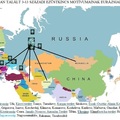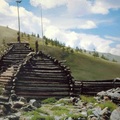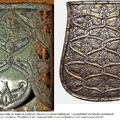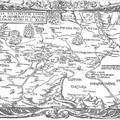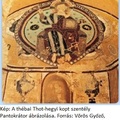The stylistic group number 3 contains objects bearing the Madyar graphic elements on them. Those elements include decorating the border with chain ornamentation – alternate ovals and circles (or in other variations) (Fig. 7 1, 5, 6, 27 – 32, 35); «the post-Sassanid style» (Fig. 7 5, 8, 25, 36). The key ornamental element here is the three- or, in most cases, the four-petal rosette (Fig. 7 6, 7 19, 26 – 31) or the blossoming flower-bud, trefoils (Fig. 7 1, 2, 24, 32, 33, 35). The belt decorations with borders set in alternate ovals and circles were found in the chronologically synchronous monuments everywhere from South Ural to Eastern Europe: the dispersed burial near Emba (Bisembayev, 2003, pp. 62–64), The Sineglazovo burial ground (Stokolos, 1962, p. 163, 167), the Bolshe-Tiganskiy burial ground (Khalikova 1976, p. 171), the Tankeyevskiy burial ground (Kazakov, 1972, p. 162–163), the burial near the Subbotitsa village (Bokiy, Pletneva, 1988, p. 106–108). According to E. P. Kazakov’s observations, this ornamental element was peculiar for the nomadic Ugor culture (including the Madyar) of Eastern Europe (Kazakov, 2001, p. 55).
Forrás: http://botalovs.narod.ru/articles.html, letöltve: 2019-04-04
The Uelgi burial complex was discovered in May, 2009. The monument is situated 8 kilometers to the north-east of the Kunashak village of the Chelyabinsk region. It takes up a number of outliers of a terrace between the lakes, namely the south-eastern shore of Lake Saygerly and the western shore of Lake Uelgi.
Up to 30 burial mounds can be visually observed on the monument’s territory (Fig. 1).

The first excavations took place there between June and August 2010. Mounds number 1 and 2 were under research. Eight burials were discovered, with two burial methods used, them being inhumation (1, 2, 7 and 8) and cremation (3, 4, 5 and 6) (Fig. 2-4).
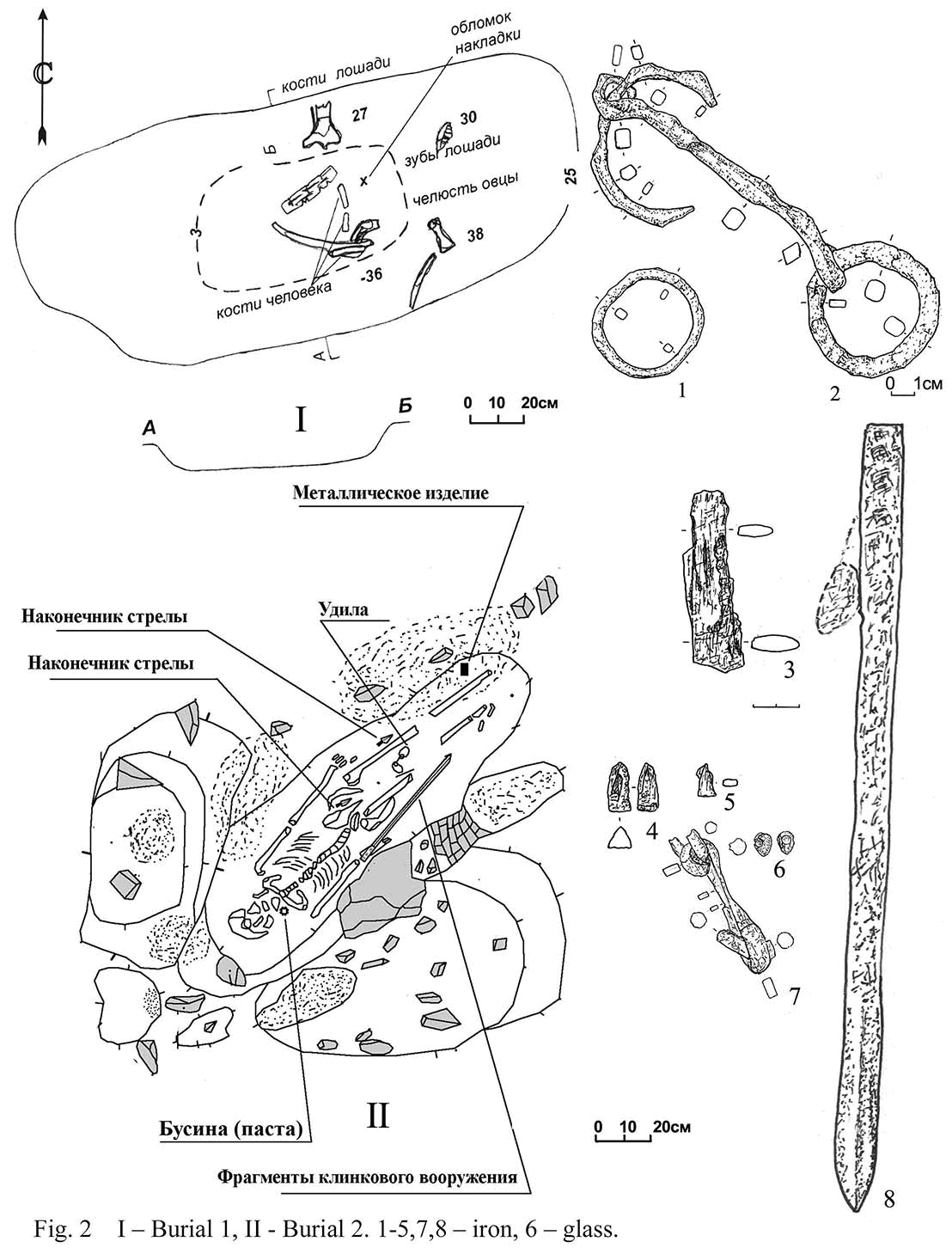
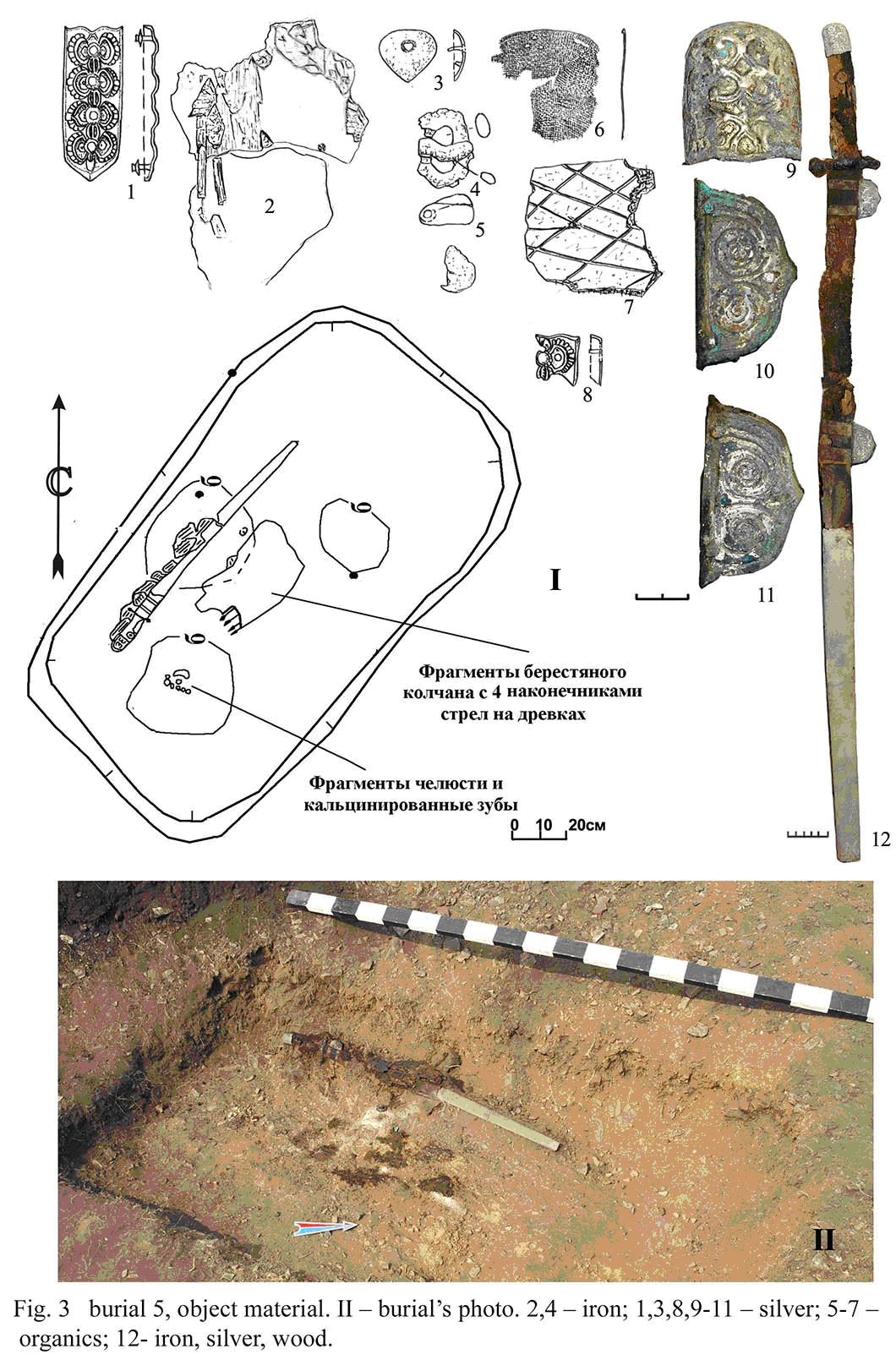
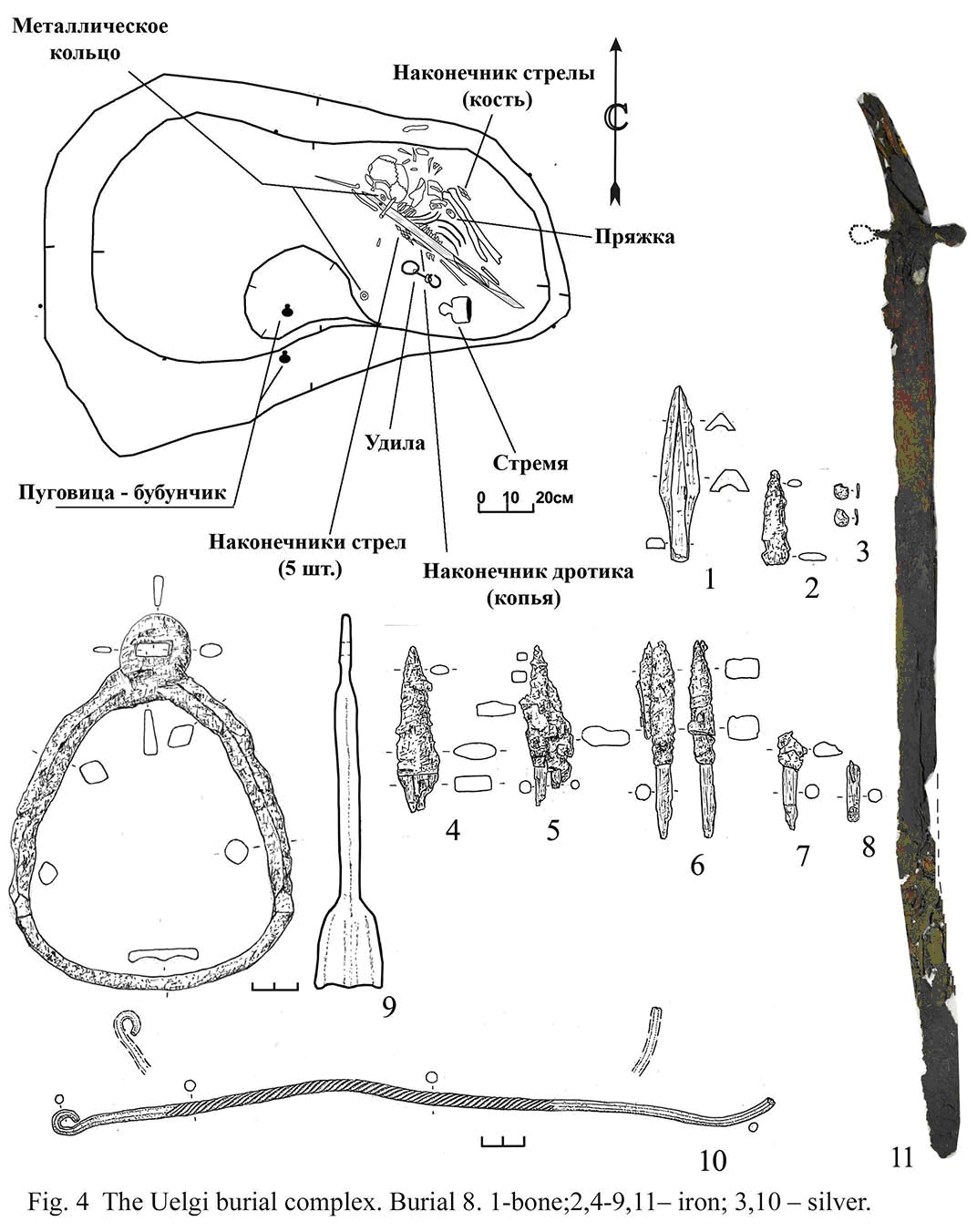
During the field works season of 2011, mounds number 3, 7 and 8 were researched (11 burials in total). Mound number 3 contained 2 burials, mound number 7 had six of them and mound number 8 contained 4 burials. All of them were performed in accordance with the inhumation rite, with the exception of one burial from mound number 3, when the rite of cremation was used. The grave pit 1 of mound number 3 had a horse buried in it. Three burials from mound number 8 were of children. All burials had been previously ransacked.
The material which has been obtained as a result of the surface gatherings and excavations allows us to come to certain conclusions on the cultural and chronological attribute of Uelgi’s burial monument. The inventory consists mainly of objects of belt mounting – the attachable boom sheets, belt caps, buckles. We need to state, however, that the majority of these items were found lying separately, not in some certain places of the monument – that being due to the fact that the burial mound had previously been destroyed and looted. Nevertheless, all the material has been subdivided into 5 stylistic groups. The first group (Fig. 5) represents mostly the non-ornamented boom sheets with the pseudo-mesh or the mesh offset (Fig. 5, 13 – 16, 22 – 25, 28), the dumbbell (Fig. 5, 51 - 55), the crescent-shaped and the boom sheets with double and triple offsets (Fig. 5, 67 – 74, 82), the boom sheets with a rib along the axis (Fig. 5, 4 – 7, 39, 41 – 42, 47), and also the boom sheets with a slot for the carrying strap (Fig. 5, 30 – 38) etc. They were widely spread in the beginning of the IX century (Mazhitov, 1993, pp. 131 – 132). We can also give here similar examples of famous monuments of the IX-X centuries in Bashkortostan and South Zauralye – the I and II Bekeshevskiy, Yamashi-Tauskiy, Khusainovskiy burial mounds, the burial ground of Graultry (Botalov, 2000, pp. 325-326; Mazhitov, 1981, pp. 37-38, 45, 54-57, 59-60, 64). The earliest samples were found in the layers of Pendzhikent from the first and until the third quarter of the VIII century (Raspopova, 1980, pp. 87 – 90). Also, it has to be noted that some direct analogies can be seen in the burial grounds situated quite far from South Ural, like the Subbotitsy monument in the Kirovograd region of the Ukraine (Fig. 5, 67 – 82) (see Bokiy, Pletneva, 1988, pp. 104 – 113). The stylistic group number two consists of belt, harness and other silver boom sheets, belt caps similar to objects found in separate burials of nomadic aristocracy of South Ural and Kazakhstan. These are sheets richly decorated with floret, caps and spreaders whose surface is amalgamated with gold. They correspond to the materials from the Lagarevskiy, Ishimbayevskiy, Staro-Khalitovskiy, Karanayevskiy burial mounds of South Ural (Mazhitov, 1981, pp. 87 – 113; Mazhitov, 1993, pp. 132 – 135). The group under consideration could possibly belong to the IX – X centuries. Certain decorative elements are similar to the Khazar (Saltov) style (Pletneva, 1981, pp. 62 – 75). The stylistic group number 3 contains objects bearing the Madyar graphic elements on them. Those elements include decorating the border with chain ornamentation – alternate ovals and circles (or in other variations) (Fig. 7 1, 5, 6, 27 – 32, 35); «the post-Sassanid style» (Fig. 7 5, 8, 25, 36). The key ornamental element here is the three- or, in most cases, the four-petal rosette (Fig. 7 6, 7 19, 26 – 31) or the blossoming flower-bud, trefoils (Fig. 7 1, 2, 24, 32, 33, 35). The belt decorations with borders set in alternate ovals and circles were found in the chronologically synchronous monuments everywhere from South Ural to Eastern Europe: the dispersed burial near Emba (Bisembayev, 2003, pp. 62–64), The Sineglazovo burial ground (Stokolos, 1962, p. 163, 167), the Bolshe-Tiganskiy burial ground (Khalikova 1976, p. 171), the Tankeyevskiy burial ground (Kazakov, 1972, p. 162–163), the burial near the Subbotitsa village (Bokiy, Pletneva, 1988, p. 106–108). According to E. P. Kazakov’s observations, this ornamental element was peculiar for the nomadic Ugor culture (including the Madyar) of Eastern Europe (Kazakov, 2001, p. 55). The fourth stylistic group (Fig. 8) includes objects having south and west Siberian decorative traditions of the second half – end of the I millennium AD (Mogilnikov, 1981, p. 43 – 52). They are characterized with florets of symmetrical composition in the shape of bines and curls. The fifth group (Fig. 9) represents objects typical for the Ural-Perm style.

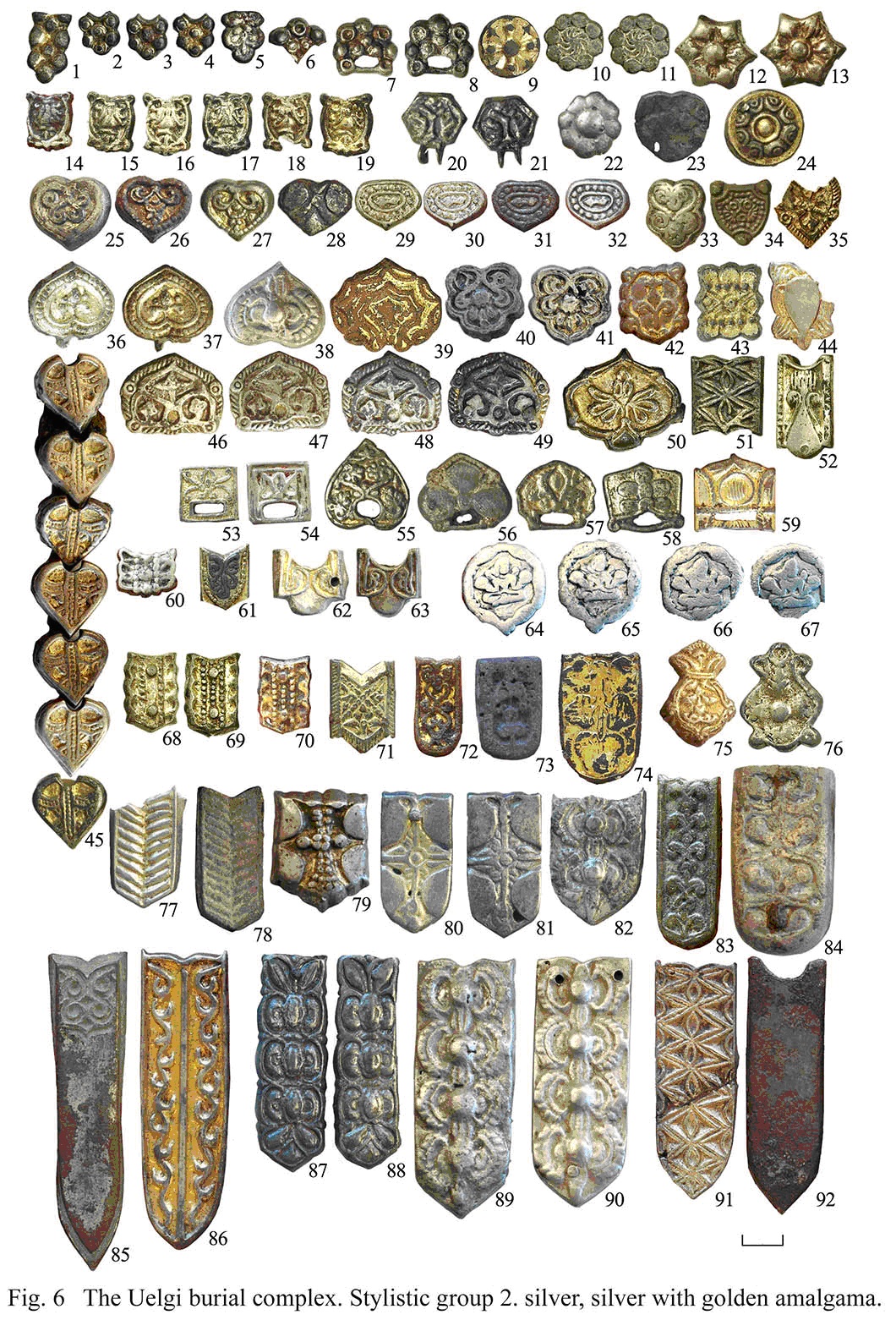



The ceramic material, that consists mainly of pots and separate fragments, generally corresponds to the typological complex of the late Kushnarenkovskiy-Karayakupovskiy look (thin sides and the crested-drawn zonal orientation). The series’ presence of pots with cord ornamentation, vessels with eye-like handles and a large amount of talcum powder in the dough, proves strong influence of the forest – probably the Petrogromskiy – cultural habitat (Fig. 10).

The materials of the burial complex near Lake Sineglazovo, the research of which was begun in 1908 by the archaeologists and scientists involved in regional studies, N. K. Minko and S. A. Gatsuk, deserve much attention. In 1959, due to the stripping works of the lime-pit of the silicate factory, another mound was discovered and thus, endangered. The rescue works were undertaken by V. S. Stokolos the same year. The largest part of the materials was published in 1962 (Stokolos, 1961, 1962) (Fig. 11, 12). In 2009 the stocks of Chelyabinsk Museum of Regional Studies got hold of the collection that was obtained during the latest excavations of the Sineglazovo complex, which also includes some material that hasn’t been published before and that needs separate description. Apart from the iron and bone parts of harness (Fig. 13 6, 9 – 14), the collection includes the gold-plated cast belt cap of the roundish rectangular shape. Its front side is decorated with the ornament depicting a simurgh (Fig. 12 8). This pictorial motive has certain analogies with the post-Sassanid graphic traditions. The next complex contains 24 gilded cast metal plates of the subsquare shape with borders. Their cutset represents a rectangular geometrical shape. The border is decorated with alternate ovals and circles. In the center there is floral ornamentation depicting trefoils blossoming vertically. Thanks to the finding of two plates, attached to one fragment of a leather belt, it became possible to reconstruct the position of plates on the belt: the growing footstalk with tillers on the sides. The plates were the decoration for the head straps (Fig. 13 1 – 2). And, finally, 15 metal plates of rectangular shape, cast-made, with their front sides gilded. All the plates are similar. Their cutset, together with borders, represents the trapeze shape. The border is decorated with alternate rhombs and circles. Each rhomb has 4
”grapes” in it. The central element of the ornament is floral and symmetrical, it depicts the blossoming flower-bud (maybe the lotus). The plates served as a decoration for the breastplate belt (Fig. 13 3 – 5). We also must add that when the material from the Uelgi burial ground was being lifted up to the surface and collected, a similar plate was found, which was made in absolutely the same way (a completely similar drawing on it, as well as the typical bezel on the longer side of it, which makes the whole shape be trapeze-like) (Fig. 13, 15 – 16). Having studied this finding carefully, we can suppose that the two objects were made by one and the same craftsman and/or were made simultaneously, and later they got into different burial mounds. The fact itself that they were found in at least two of the burials in the forest-steppe of South Zauralye, can indicate that this region had some cultural center of the nomadic aristocracy of the IX – X centuries situated in it.


Thus, in short, we see the whole picture of the ethnic cultural transformation that led to the appearance of the necropolis sites like Uelgi and Sineglazovo, the following way.
The groups of cattle-breeding semi-nomadic population, who were formed as a part of the Bakal historical and cultural layer (IV – VI centuries AD) and were the bearers of the Kushnarenkov-Karayakupov circle of ceramics, began migrating to the West, to the basin of the Belaya and the Kama rivers in the VI century. There, as a result of it, multiple monuments of this outlook appeared (Fig. 14). At the same time, the Kushnarenkov materials appeared far in the steppe of South Zauralye, on the short-period camp-sites and in mounds with ridges (Selentash, Kaynsay, Bersuat) (Fig. 14, 67, 70, 71).
We do believe that these facts were not accidental and that they illustrate the process of interaction between the proto-Madyar population and the nomads of the forming Western Turkic Chaganate. There is no doubt that today we can only make very vague assumptions about the role which this population played in the cultural and ethnic genesis of the nomads of the Ural-Kazakh steppe during the period of the Great Turkic Chaganate. Nevertheless, it is obvious, that approximately three hundred years after its formation (the end of the IX century), somewhere deep in the forest-steppe area of South Ural, nomadic complexes of the late Kushnarenkovskiy-Karayakupovskiy layout, like Sineglazovo, Uelgi, Lagarevo, Karanayevo and others appeared. These complexes were representing the nomadic cultural complex of the syncretic character, which also included elements of the central and east Kazakhstan, Altai layouts, along with certain features typical for the western nomadic complexes of Povolzhye (the Volga river region), Podneprovye (the Dnepr river region) and Podunavye (the Danube river region). We hope that the reconstruction of the character, type and formation sequence of these cultural ties and similarities is a research to be implemented in connection with new perspectives, which are now facing the science after the Uelgi burial complex has been discovered.
Список литературы
Bissеmbаеv А.А. Slutchaynye nachodki rubezha I – II tysyatcheletiy s territorii Aktyubinskoi oblasti // Isvestiya NAN RK.Seriya obstchestvennych nauk, 2003.
Bokiy N.M., Pletneva S.A. Sahoronenie semyi kotchevnika X v.v basseyne Ingula // S.A. № 2, 1988.
Botalov S.G. Posdnya drevnost' i rannyee srednevekovye // Drevnyaya istoriya Yuzhnogo Sauralya. - Chelyabinsk, 2000.
Botalov S.G. Оtchet o pereobsledovanyia archeologitcheskih pamyatnikov v doline reki Gumbeyka Agapovskogo rayona i razvedotchnykh issledovaniyakh v Kunachakskom rayone Chelyabinskoi oblasti v 2009 godu - Chelyabinsk, Yuzhno-Ural'ski filial IIA UrO RAN, 2010.
Kazakov E.P. О lokalisazii madyar v IX v. // Voprossy drevnei istorii Volgo-Kamya: sbornik nautchn.tr. – Каzаn', 2001.
Kazakov Е.P. О nekotorykh vengerskick analogiyakh v vestchevom materiale Tankeevskogo mogilnika // Problemy archeologii i drevnei istorii ugrov: sbornik st.- М., 1972.
Маzhitov N.А. Kurgany Yuzhnogo Urala VIII – XII vv. – М., 1981.
Маzhitov N.А. Мaterialy k khronologii srednevekovykh drevnostey Yuzhnogo Urala VII – XI vv. //Khronologiya pamyatnikov Yuzhnogo Urala: sbornik st.- Ufа, 1993.
Моgilnikov V.А. Kimaki. Srostkinskaya kultura// Stepi Evrasii v epokhu srednevekovya. – М., 1981.
Pletneva S.А. Saltovo-mayatzkaya kultura // Stepi Evrasii v epokhu srednevekovya. – М., 1981.
Raspopova V.I. Меtаllitcheskiye izdeliya rannesrednevekovogo Sogda.– L., 1980.
Stokolos V.S. Kurgan nа оzеrе Sineglasovo. // Аrkhеоlоgiya i etnografiya Bаchkirii. Т. 1., 1962.
Stokolos V.S. Sоkrоvitschа оzеrа Sineglasovo. // Urаlskiy slеdоpyt. – № 4, 1961.
Erdélyi I. Régészeti kutatások Baskiriában és a Magyar őstörténet // AÉ. – Budapest. 1972. № 99.
Fodor I. Research on the Proto-Hungarians / The New Hungarian Quarterly. 1977.
László Gy. A «kettős honfoglalás». – Bp.Magvető Kiadó. 1978. – 215 c.
Erdélyi I., Ojtozi E., Gening W. Das Gräberfeld von Newolino.- Budapest: Akadémiai Kiadó.1969.
Khalikova Е.А. Bol'che-Tiganski mogil'nik // SА. № 2, 1976.
Маzhitov N.А. Yuzhnyi Ural v XII – XIVvv. – М.: Izdatelstvo Nauka, 1977. s. 228-232.
Barta Antal. Istoki vengerskoi kultury.// Problemy archeologii i drevnei istorii ugrov: sb. st. – М., 1972. s. 118-127.
Erdélyi I. Оb archeologitcheskoi kulturе drevnich vengrov kоnzа IX – pеrvоi pоlоviny X v.n.e. // .// Problemy archeologii i drevnei istorii ugrov: sb. st. – М., 1972. s. 128-144.
Khalikova Е.А. Pоgrеbаlnyi оbryad Tankeevskogo mоgilnikа I ego vеngеrskiye pаrаllеli. // Problemy archeologii i drevnei istorii ugrov: sb. st. – М., 1972. s. 145-160.
Kazakov Е.P. О nekotorykh vengerskick analogiyakh v vestchevom materiale Tankeevskogo mogilnika. // Problemy archeologii i drevnei istorii ugrov: sb. st. – М., 1972. s. 161-167.
Khalikova Е.А. Magna Hungaria. // Vоprosy istоrii.- № 7, 1975.
Gening V.F. Magna Hungaria és a régészeti emlékanyag.- Budapest: Különlenyomat az archeológiai Értesitő.1978.
Drevnyaya istoriya Yuzhnogo Zauralya. Tom II. Rаnnyi sheleznyi vеk I srednevekovye. Kоllеktivnaya mоnоgrаfiya.- Chelyabinsk: Izd-vо YurGU, 2000. – 494s.
Khalikov А.H. Kultura drеvnich vеngrоv v Priuralye i Pridunaviyе v VIII-X vv. n.e. // Mаtеrialy simpoziumа Nové vozokany 3-7 oktyabrya 1983g. – Nitra, 1984.
Bоtаlоv S.G. Gunny i tyurki (istoriko-arheologitcheskaya rеkоnstrukziya). – Chelyabinsk: ООО ZIKR Rifei, 2008. – 672 s.
Bоtаlоv S.G., Tideman Е.V., Lukinych А.А., Vоchmеntchеv М.P. Nоvyе mаtеrialy issledovanyi Bоlschogo Bakalskogo gоrоdиtscha.// Problemy balalskoi kultury. Chelyabinsk: ООО ZIKR Rifei,, 2008. S. 6-41.
Маtvееvа N.P. Fоrmirovаniye kuchnarenkovskih kоmplеksоv v Zаuralyе.// AB ORIGINE: Problemy gеnеzisа kultur Sibiri.- Тyumen'. S. 63-75.

